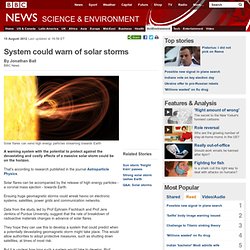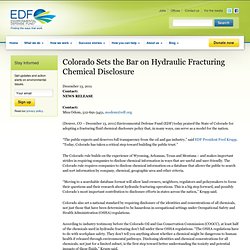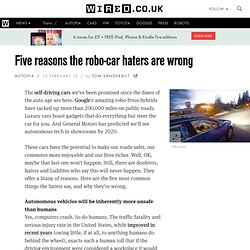

Creation of new materials inspired by nature. ICT revolution continues. Nano and Bio technology revolution. Alternative energy generation. System could warn of solar storms. 15 August 2012Last updated at 18:59 ET By Jonathan Ball BBC News Solar flares can send high energy particles streaming towards Earth A warning system with the potential to protect against the devastating and costly effects of a massive solar storm could be on the horizon.

That's according to research published in the journal Astroparticle Physics. Solar flares can be accompanied by the release of high energy particles - a coronal mass ejection - towards Earth. Ensuing huge geomagnetic storms could wreak havoc on electronic systems, satellites, power grids and communication networks. Data from the study, led by Prof Ephraim Fischbach and Prof Jere Jenkins of Purdue University, suggest that the rate of breakdown of radioactive materials changes in advance of solar flares. They hope they can use this to develop a system that could predict when a potentially devastating geomagnetic storm might take place. But it is unclear how long such a system would take to develop. 'Disruptive Technologies'. Wind turbine creates water from thin air. The turbine can produce up to 1,000 liters of drinking water every day, according to Eole Water.

French company, Eole Water, has invented a wind turbine that can generate water from humid air. The technology offers a clean and sustainable way to provide water to rural communities, says Eole Water director of marketing, Thibault Janin. A view inside the technological processes of the Eole Water turbine. The 24-meter tall structure also filters and purifies the water it produces ensuring it is suitable to drink straight away. Water from thin air The Eole Water Turbine Self sufficient villages Technological specifications Purification process Makers of a wind turbine claim it can generate power and water from humid airDevelopers hope the device will bring water to rural communities in arid countriesThe technology could be adapted to meet the needs of small cities in the future, say manufacturers See also: Wind powers new energy age See also: Can hot air be the free fuel of the future?
Colorado Sets the Bar on Hydraulic Fracturing Chemical Disclosure. Contact:Mica Odom, 512-691-3451, modom@edf.org (Denver, CO – December 13, 2011) Environmental Defense Fund (EDF) today praised the State of Colorado for adopting a fracturing fluid chemical disclosure policy that, in many ways, can serve as a model for the nation.

“The public expects and deserves full transparency from the oil and gas industry,” said EDF President Fred Krupp. “Today, Colorado has taken a critical step toward building the public trust.” The Colorado rule builds on the experience of Wyoming, Arkansas, Texas and Montana – and makes important strides in requiring companies to disclose chemical information in ways that are useful and user-friendly. The Colorado rule requires companies to disclose chemical information on a database that allows the public to search and sort information by company, chemical, geographic area and other criteria. Finally, the Colorado rule takes a reasonable approach to trade secrets. Five reasons the robo-car haters are wrong.
The self-driving cars we've been promised since the dawn of the auto age are here.

Google's amazing robo-Prius hybrids have racked up more than 200,000 miles on public roads. Luxury cars boast gadgets that do everything but steer the car for you. And General Motors has predicted we'll see autonomous tech in showrooms by 2020. These cars have the potential to make our roads safer, our commutes more enjoyable and our lives richer.
Well, OK, maybe that last one won't happen. Autonomous vehicles will be inherently more unsafe than humans Yes, computers crash. A recent New York Times article featured an interesting quote from NHTSA's chief counsel: "We think it's a scary concept for the public. New Mexico City buses cut pollution, generate cash. Spinoff Homepage. Chart Focus: How business uses social technologies. How to survive the next 100,000 years. MacGregor Campbell, contributor Will humans be around in the deep future?

Given the track record of most mammals, we've got a pretty good shot at surviving for at least the next 100,000 years and possibly even a million years or more. Of course, that's not to say we won't face any challenges. We can expect threats we've encountered before, like colossal volcanic eruptions and pandemic bugs, as well as new ones like out-of-control technology. In this animation, we give you a sneak peek at what could be in store for future generations of humans. Solve for X.